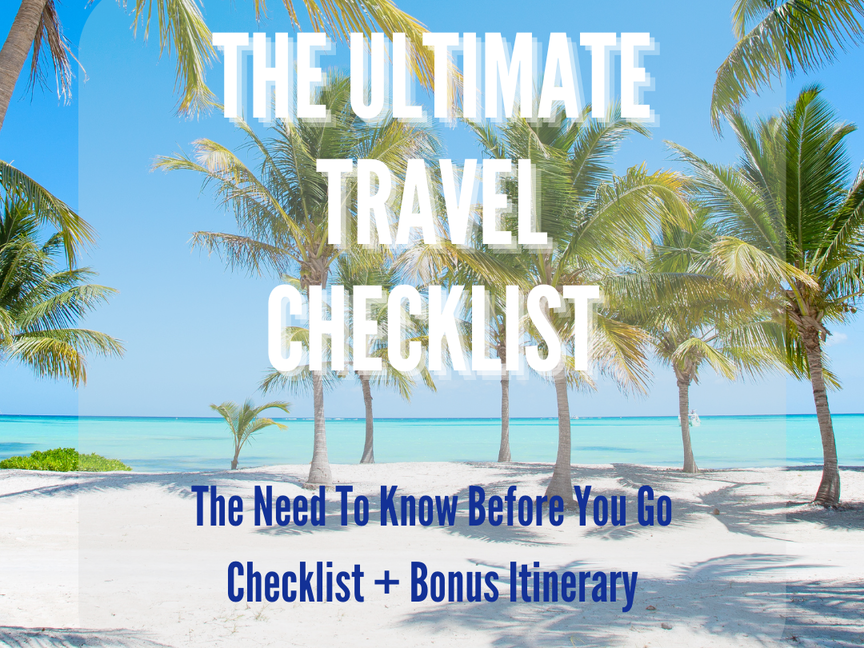When you embark on the journey of planning a trip, the first step is to set clear travel goals. Think about what you want to achieve during your travels. Are you looking to immerse yourself in a new culture, relax on a beach, or perhaps embark on an adventure?
Defining your objectives will not only guide your destination choices but also shape your overall experience. For instance, if your goal is to explore historical sites, you might prioritize cities rich in heritage and museums. Conversely, if relaxation is your aim, you may lean towards serene landscapes or wellness retreats.
Do you want to meet new people, try local cuisines, or engage in outdoor activities? By identifying these desires, you can tailor your trip to ensure it aligns with your expectations.
This clarity will help you make informed decisions throughout the planning process, from selecting accommodations to choosing activities that resonate with your aspirations. Remember, the more specific your goals are, the easier it will be to create a fulfilling travel itinerary. Check out our Women’s Group Trips!
Key Takeaways
- Set clear and achievable travel goals to help guide your trip planning and decision-making.
- Research your destination thoroughly to understand its culture, customs, and any potential safety concerns.
- Pack smart and light by choosing versatile clothing and essential items to make traveling easier and more enjoyable.
- Organize your travel documents, including passports, visas, and insurance, to ensure a smooth and stress-free journey.
- Plan your itinerary carefully, allowing for flexibility and downtime to avoid feeling overwhelmed and exhausted during your trip.
- Prioritize your health and safety by staying informed about potential health risks and taking necessary precautions.
- Manage your finances by setting a budget, carrying local currency, and keeping track of your expenses to avoid overspending.
- Remember to relax and enjoy your trip by taking time to appreciate the new experiences and surroundings.
Researching Your Destination
Once you have established your travel goals, the next step is to dive into researching your chosen destination. This phase is crucial as it allows you to gather valuable information that can enhance your experience.
These platforms often provide insights from fellow travelers who have firsthand experience in the area. Pay attention to their recommendations on must-see attractions, local customs, and hidden gems that may not be widely advertised. In addition to general research, consider delving into the cultural aspects of your destination.
Understanding local traditions, etiquette, and even basic phrases in the native language can significantly enrich your interactions with locals. This knowledge not only shows respect for their culture but also opens doors to more authentic experiences. Furthermore, familiarize yourself with the climate and seasonal variations of your destination.
This information will help you pack appropriately and plan activities that suit the weather conditions.
Packing Smart and Light
Packing can often feel like a daunting task, but with a strategic approach, you can pack smart and light for your trip. Begin by creating a packing list that aligns with your travel goals and itinerary. Consider the activities you have planned and pack versatile clothing that can be mixed and matched.
This not only saves space but also ensures you are prepared for various situations without overloading your suitcase. When it comes to packing essentials, prioritize items that serve multiple purposes. For example, a lightweight scarf can double as a beach cover-up or a cozy wrap for cooler evenings.
Additionally, opt for travel-sized toiletries and consider using packing cubes to keep your belongings organized. This method not only maximizes space but also makes it easier to find what you need without rummaging through your entire bag. Remember, packing light allows for greater mobility and flexibility during your travels.
Organizing Your Travel Documents
As you prepare for your trip, organizing your travel documents is essential for a smooth journey. Start by gathering all necessary paperwork, including your passport, visa (if required), travel insurance details, and any reservation confirmations for flights and accommodations. Create a dedicated folder or digital file where you can store these documents securely.
This way, you can easily access them when needed without the stress of searching through multiple sources. In addition to physical documents, consider keeping digital copies of important papers on your smartphone or cloud storage. This precaution ensures that even if something gets lost or stolen, you still have access to vital information.
Furthermore, familiarize yourself with any entry requirements or health regulations specific to your destination. Being well-prepared in this regard will help you avoid any last-minute surprises at the airport or border crossings.
Planning Your Itinerary
With your research complete and documents organized, it’s time to plan your itinerary. Start by outlining the key attractions and activities that align with your travel goals. Be sure to strike a balance between sightseeing and downtime; over-scheduling can lead to burnout and detract from the enjoyment of your trip.
Consider allocating time for spontaneous adventures as well—some of the best travel memories come from unplanned experiences. When creating your itinerary, factor in logistics such as transportation options and travel times between locations. Utilize mapping tools or apps to estimate distances and plan accordingly.
Additionally, be mindful of local holidays or events that may affect availability or accessibility to certain attractions. By taking these elements into account, you can create a well-rounded itinerary that maximizes your time while allowing for flexibility.
Staying Healthy and Safe
Your health and safety should always be a priority while traveling. Before embarking on your journey, research any health advisories or vaccinations recommended for your destination. It’s wise to consult with a healthcare professional who can provide personalized advice based on your travel plans.
Additionally, consider packing a small first-aid kit with essential medications and supplies for minor ailments. While on the road, practice common safety measures such as being aware of your surroundings and keeping valuables secure. Familiarize yourself with local emergency numbers and the location of nearby hospitals or clinics in case of an emergency.
Staying connected with friends or family back home can also provide an added layer of security; share your itinerary and check in regularly to keep them informed of your whereabouts.
Managing Your Finances
Managing finances effectively during your travels is crucial for ensuring a stress-free experience. Start by creating a budget that outlines expected expenses such as accommodations, meals, transportation, and activities. This will help you keep track of your spending and avoid overspending in any one area.
Additionally, consider using budgeting apps that allow you to monitor expenses in real-time. When it comes to handling money abroad, familiarize yourself with local currency exchange rates and options for accessing funds. It’s advisable to carry a mix of cash and cards for convenience; some places may only accept cash while others may prefer card payments.
Be cautious when using ATMs—opt for machines located in well-lit areas or inside banks to minimize risks of theft or fraud.
Tips for Relaxing and Enjoying Your Trip
Finally, remember that the essence of travel lies in enjoyment and relaxation. While planning is essential, it’s equally important to allow yourself moments of spontaneity and leisure during your trip. Embrace the unexpected; sometimes the best experiences come from wandering off the beaten path or engaging with locals in unplanned conversations.
To enhance relaxation during your travels, incorporate downtime into your itinerary. Whether it’s lounging at a café with a good book or taking leisurely strolls through scenic areas, these moments can rejuvenate your spirit and enhance overall enjoyment. Additionally, practice mindfulness techniques such as deep breathing or meditation to stay grounded amidst the excitement of exploration.
In conclusion, traveling is an enriching experience that requires thoughtful planning and preparation. By setting clear goals, conducting thorough research, packing wisely, organizing documents, planning itineraries, prioritizing health and safety, managing finances effectively, and allowing time for relaxation, you can create memorable journeys that resonate long after you return home. Embrace the adventure ahead with an open heart and mind; every trip has the potential to teach you something new about the world—and yourself.
If you’re looking for more tips on how to travel stress-free, be sure to check out the travel checklist on Over 30 and Overseas. This comprehensive guide will help you stay organized and prepared for your next adventure. Additionally, you can visit their blog for more travel inspiration and advice tailored specifically for women over 30. And if you’re interested in connecting with like-minded travelers, consider joining their meetup group to share experiences and tips with others in your age group.





